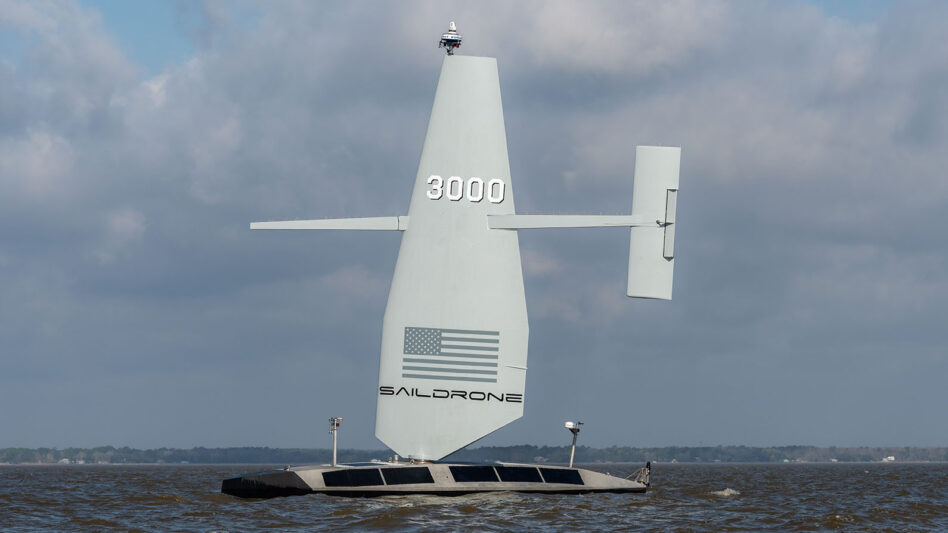Looks like we’re on a bit of a maritime kick today. This morning, unmanned surface vessel (USV) company Saildrone announced that its 65-foot Surveyor vessel has received full classification from the American Bureau of Shipping (ABS).
Now, what does that mean for us non-seafaring laypeople? Basically, the company’s big-boy sailboat drone has been inspected and officially meets the (quite rigorous) design, construction, and maintenance standards set out by ABS for all ships—crewed or not.
While ABS certification isn’t currently required for USVs used by the DoD, it does act as a rubber stamp. It’s a whole lot easier to convince Congress and military leaders you’re legit if the country’s top ship certifier has said you are.
“We’re trying to match the standards of safety and professionalism you’d see on a ship to get ahead of the curve,” Saildrone CEO Rich Jenkins told Tectonic. “In upcoming Navy proposals, you’re starting to see requirements for ABS certifications creeping in.”
One of the company’s smaller boats—the 33-foot Voyager—also received ABS certification in 2023. According to Saildrone, “no other USV or UUV has yet received full classification
status from any classification society.”
“The maritime industry is increasingly integrating autonomous systems into vessel designs. We are proud to work with innovative companies like Saildrone to explore these technologies,” ABS Senior Vice President and Chief Technology Officer Patrick Ryan told Tectonic via email.
Out at sea: Before we jump into the whole why-safety-certifications-are-important thing, a bit of a backgrounder on Saildrone. We’ve covered the company before—they make sailboat-like drones that can travel super-long distances, stay at sea for months at a time, and are good at things like ISR.
The wind- and solar-powered drones:
- Come in three sizes: the 23-foot Explorer, 33-foot Voyager, and 65-foot Surveyor.
- Can operate in GPS-denied environments.
- Are kitted out with high-powered radar and cameras that can cover thousands of square miles every day at a “fraction of the cost” of crewed boats, according to the company.
- Have also been used for oceanographic and climate research.
They’re already being used by the US Navy and international partners, including Denmark. In February, 20 Voyagers were deployed in the US anti-narcotics Operation Southern Spear in the Gulf of Mexico, and Saildrone vessels are also deployed with the Navy’s Task Force 59 in the Middle East.
Up to code: When deploying on military missions like these, Jenkins sees it as mission-critical that unmanned vessels are just as safe and reliable as any other ships the military might use. With this certification, he added, Saildrone’s Voyager is basically being held to the same code as a light warship, plus its autonomy stack has also been put to the test.
His concern is that as the USV space gets more crowded and as unmanned boats get faster and bigger, the risk of not having enforced safety standards is all the greater.
“What has happened since Starlink emerged is that it’s lowered the barriers to entry for anyone who wants to do an unmanned system,” he said, referring to Elon Musk’s satellite internet company. “Certification will be key to differentiating professional safe solutions from things that aren’t as robust.”
If there is one major safety incident, he fears, the whole industry could be punished. “It just gets harder as [the boats] get bigger and faster,” he said. “My biggest concern is that someone does have an accident and ruins it for the industry.”
That’s why Saildrone sees certification like this as key. For what it’s worth, USV company Saronic has also teamed up with ABS to develop vessels.
“It’s a fine balance of putting regulations in place without slowing down the speed of evolution,” he added.

